A new park on Sydney’s former Water Police site reconnects the area to the waterfront.
August 2nd, 2010
Harris Street, Pyrmont is now reconnected with the waterfront for the first time in over a hundred years.
Pirrama Park, with its dramatic corner café and waterside plaza, anchors the street to Elizabeth Macarthur Bay, replacing various industrial uses that previously dominated the site and made it inaccessible to the public.
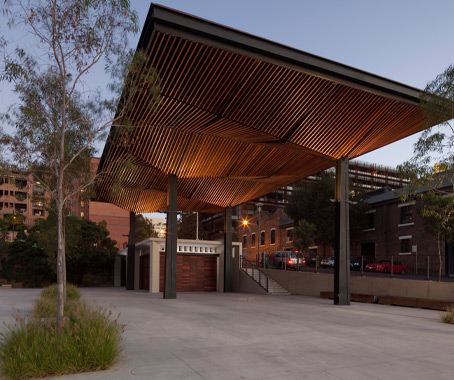
ASPECT Studios together with Hill Thalis Architecture + Urban Projects and CAB Consulting prepared the master plan and design for the City of Sydney Council.
The design teams were faced with a vast, concrete platform and wharves remaining from the activities of the site’s former occupant, the Water Police.
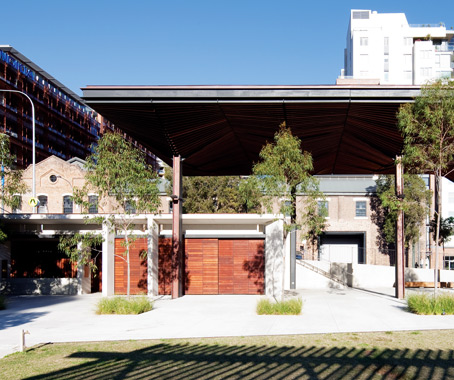
The opportunity to reconnect Harris Street with the harbour was a unanimous response to the site by the design teams.
This opportunity was developed through three design principles: the flexible park, the richness and variety of the park experience, and engaging with water.
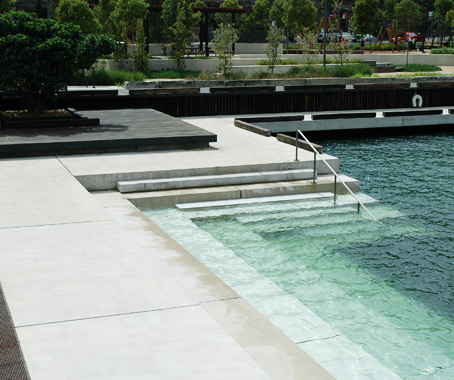
ASPECT coordinated the park’s design with Hill Thalis focusing on the architectural elements of the project.
Essentially, the park’s form is focused on two spines – a water promenade defined by an edge suggestive of the former shoreline, and Harris Street, which is terminated by the plaza, canopy and belvedere.
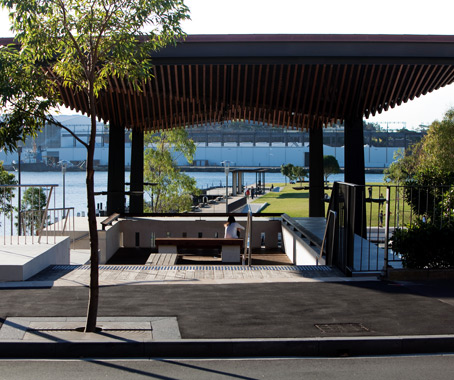
The multi-purpose park spine runs north-south through the site and is formed from a walkway, a low, straight retaining wall edged with a parallel planting bed and irregular concrete walls reminiscent of the former shoreline.
As with many elements of the site, the retaining wall integrates multiple functions.
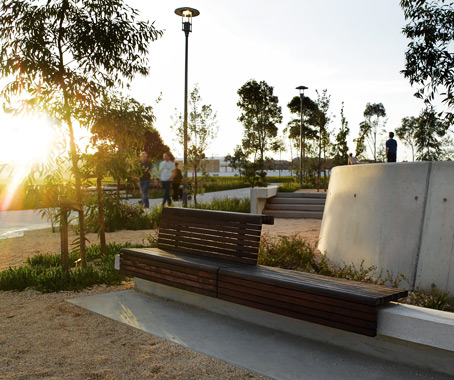
There are several water rooms on the harbour side of the wall – the inlet and pole garden – while on the landward side there are gum groves, playgrounds and lawn areas.
There is a design vocabulary of robust and brutalist elements that reference the past industrial use of the site and the relationship between the park’s elements.
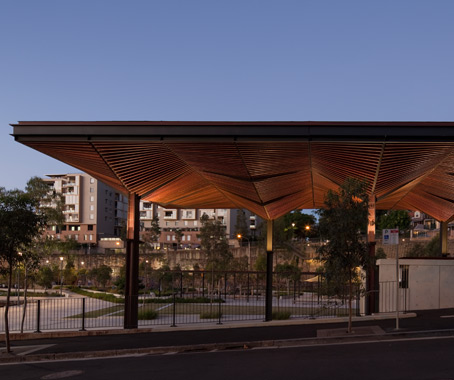
There is a complex and thorough logic and process behind the design of the building, where all the elements, materials and functions are interrelated in a poetic manner.
“The Canopy provides generous shade and shelter to the elements, and becomes the architectural symbol of the park,” says Thalis.
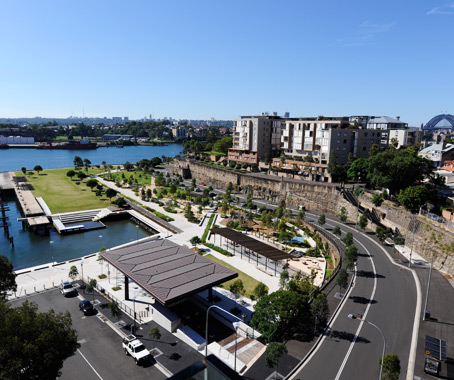
It is a symbol that has already caught the imagination of park users in how they use every aspect of the building and has opened the park up to its future.
Tempe Macgowan is a landscape architect and freelance writer on landscape architecture.
INDESIGN is on instagram
Follow @indesignlive
A searchable and comprehensive guide for specifying leading products and their suppliers
Keep up to date with the latest and greatest from our industry BFF's!
The new range features slabs with warm, earthy palettes that lend a sense of organic luxury to every space.

A longstanding partnership turns a historic city into a hub for emerging talent

Combining design expertise and high tech 3D printing, the already renowned QT Hotel brand has expanded its boutique stayover experience with the QT Melbourne
Pulse is an innovative new conference table with a range of hidden features.

Renowned for its unparalleled craftsmanship and revered design, Poliform has released its first-ever outdoor furniture collection. Tailored for the discerning needs of commercial and residential environments, the range promises to reshape luxury in the great outdoors.
Stylecraft hosted Christmas drinks in their Melbourne showroom on Thursday 18 December, celebrating the season with summer punch, delicious food and dancing. The event coincided with the inaugural Stylecraft Christmas Toy Appeal for Anglicare, with guests placing gifts under the Christmas tree for people in need.
The internet never sleeps! Here's the stuff you might have missed
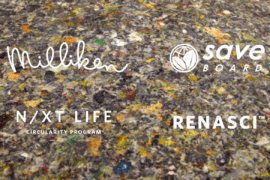
Developed by Milliken in partnership with saveBOARD, Renasci™ is a breakthrough circular flooring product made from carpet and soft plastics waste – designed to be repeatedly recycled.
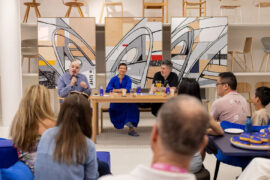
The Richmond precinct will be one of the busiest hubs of Saturday Indesign 2025, with a full program of talks, product launches, installations, hospitality and entertainment running throughout the day.